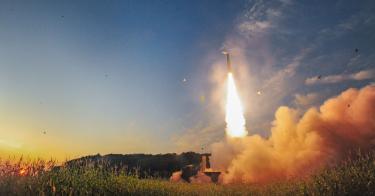This year, North Korea celebrated the Fourth of July by testing long-range missiles capable of reaching the U.S. mainland. Four months later, the Defense Intelligence Agency reported that Pyongyang is now able to miniaturize a nuclear warhead.
North Korea's "Dear Leader," Kim Jong Un, has made no secret of his desire to nuke the U.S. In 2013, he threatened to nuke Austin, Texas. He also has cited Los Angeles and Washington, D.C., as preferred targets.
Small wonder, then, that the Trump administration last week requested an additional $4 billion to beef up U.S. missile defenses. Currently, our very limited missile defense systems are concentrated in the West. Cities on the East Coast are far less protected. And the missile threat for both coasts is growing.
That's because North Korea is not the only rising and obsessively anti-American state out there. Iran is another one, and it's flush with cash from the deal it cut with the Obama administration — a deal that also gave the terrorist-supporting state access to international markets with advanced technologies.
Iran is almost certainly using these funds to improve its ballistic missiles, as well as to underwrite terrorist activities aimed at weakening the U.S. and its allies.
Earlier this month, the regime celebrated the 38th anniversary of the seizure of the U.S. embassy in Tehran and taking U.S. diplomats hostage. The mullahs still denounce America as "the Great Satan," and ritual chants of "Death to America" still punctuate Friday prayers.
The 2015 nuclear deal has temporarily delayed the regime's nuclear weapons program but has not dampened its ambitions. Unless the international conditions change dramatically, we will be facing a nuclear-armed Iran in just a few years.
The $4 billion boost in spending requested by President Trump is a drop in the federal budget, but it is approximately half of the annual budget of the agency with primary responsibility for the nation's missile defense.
Over half of the proposed hike would go to augment the Ground-Based Midcourse Defense system — and rightly so. This system shoots down enemy missiles in their midcourse phase, hundreds of miles before they reach U.S. territory.
Currently we have four of these interceptors in California and up to 40 in Alaska. That's comforting when one ponders the rhetoric and actions of North Korea's "Rocket Man," but we need to stay ahead of that threat. And missile defenses aren't built in a day.
Some people oppose spending more money on missile defense, arguing that these systems will never achieve 100% reliability. But nothing in life is 100% guaranteed.
If missile defenses save just one major U.S. city, the entire investment will have been justified many times over.
Our systems have compiled an impressive test record. Yes, sometimes they have failed a test, but that's not automatically a bad thing.
In testing, we learn more from failures than successes. We stress the system and push it to its limits. Failures allow us to identify weaknesses in the system and fix them. It's a process that has produced ever more reliable defenses.
Is it perfect? No. But certainly the alternative — letting the enemy missile have a free ride into an American city — is unacceptable.
Technologies improve every day. What seemed like science fiction even five years ago is a common occurrence now. That is why the government must sustain its investment in missile defense. It must also increase funding for future missile defense technologies so we are not caught by surprise and vulnerable.
We do everything possible to keep ahead of this growing threat. After all, no one wants to celebrate the Fourth under a mushroom cloud.
This piece originally appeared in Investor's Business Daily



